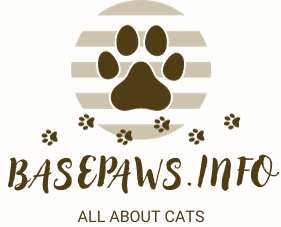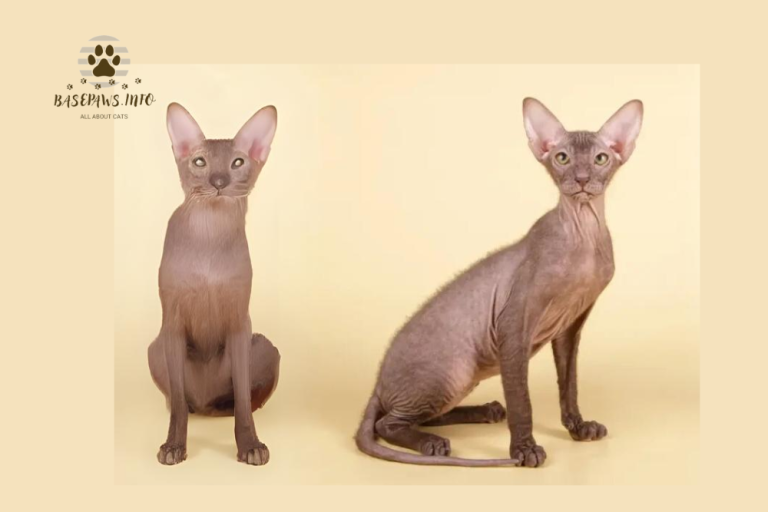The Complete Guide to 21 Fluffy Cat Breeds: Cuddly Companions Await!
Choosing the right cat can feel overwhelming, especially with so many fluffy breeds available. You may be asking yourself questions like, “Which breed will fit into my lifestyle?” or “How much grooming will my new pet require?” These are valid concerns, as each fluffy cat breed has its unique characteristics and needs. Understanding these factors will help you make an informed decision.
Fluffy cats can bring joy, companionship, and warmth into your home. However, potential owners must know each breed’s grooming requirements, temperament, and health issues. This guide aims to provide all the necessary information, making your journey toward finding the perfect fluffy friend easier and more enjoyable.
By the end of this article, you’ll have a comprehensive understanding of various fluffy cat breeds, their care needs, and essential tips for maintaining a happy and healthy environment for your new pet. So, let’s dive into the fascinating world of fluffy cats!
Understanding Fluffy Cat Personalities
Before selecting a fluffy cat breed, it’s crucial to consider their personalities. Different breeds possess varying traits that can significantly affect their compatibility with your lifestyle.
- Maine Coon: Often called “gentle giants,” Maine Coons are social, friendly, and enjoy interacting with their human companions. They can also be quite playful, making them great for families.
- Ragdoll: Known for their docile and calm nature, Ragdolls are affectionate and love to be held, making them excellent lap cats.
- Norwegian Forest Cat: This breed is known for being independent yet sociable. They enjoy climbing and exploring, which can add excitement to your home.
Understanding the unique personality of each breed helps ensure a harmonious relationship between you and your fluffy companion.
Fluffy Cat Breeds
Here is a list of popular fluffy cat breeds, along with their characteristics, grooming needs, and temperaments.
| Breed | Characteristics | Grooming Needs | Temperament | Lifespan |
|---|---|---|---|---|
| Maine Coon | Large, tufted ears, long tail | Moderate; weekly brushing | Social, playful | 12-15 years |
| Persian | Round face, short muzzle, long, flowing coat | High; daily brushing | Calm, gentle | 12-17 years |
| Ragdoll | Blue eyes, soft, semi-long fur | Moderate; weekly brushing | Affectionate, laid-back | 12-15 years |
| Norwegian Forest Cat | Thick, water-repellent coat, bushy tail | Moderate; bi-weekly brushing | Friendly, independent | 14-16 years |
| Birman | Bright blue eyes, silky coat | Moderate; bi-weekly brushing | Gentle, social | 12-16 years |
| Siberian | Thick, triple coat, muscular build | High; weekly brushing | Playful, affectionate | 12-15 years |
| Turkish Angora | Long, silky coat, elegant appearance | Moderate; weekly brushing | Active, playful | 12-18 years |
| Scottish Fold | Unique folded ears, round face | Moderate; weekly brushing | Friendly, adaptable | 11-15 years |
| Himalayan | Pointed color pattern, long hair | High; daily brushing | Calm, affectionate | 15 years or more |
| Selkirk Rex | Curly coat, round face | Moderate; bi-weekly brushing | Playful, loving | 10-15 years |
| Exotic Shorthair | Short, dense coat, flat face | Low; weekly brushing | Affectionate, relaxed | 12-15 years |
| RagaMuffin | Plush coat, large size | Moderate; weekly brushing | Sweet, laid-back | 12-16 years |
| LaPerm | Curly coat, friendly demeanor | Moderate; weekly brushing | Affectionate, playful | 10-15 years |
| American Bobtail | Short tail, sturdy build | Low; occasional brushing | Playful, intelligent | 11-15 years |
| Japanese Bobtail | Long legs, short tail | Low; occasional brushing | Energetic, friendly | 10-15 years |
| Pixie-Bob | Bobbed tail, wild appearance | Low; occasional brushing | Friendly, loyal | 13-15 years |
| British Longhair | Plush coat, stocky build | Moderate; weekly brushing | Gentle, affectionate | 12-15 years |
| Nebelung | Long, silky coat, blue eyes | Moderate; bi-weekly brushing | Gentle, social | 15 years or more |
| Somali | Medium-length coat, ticked pattern | Moderate; weekly brushing | Playful, active | 12-16 years |
| Turkish Van | Semi-long coat, distinctive color pattern | Moderate; bi-weekly brushing | Energetic, affectionate | 15 years or more |
| Siberian Forest Cat | Thick, water-repellent coat | Moderate; weekly brushing | Gentle, friendly | 12-15 years |
Choosing the Perfect Fluffy Cat
When selecting the ideal Fluffy Cat Breeds, consider your lifestyle and preferences. Here are some tips based on specific needs:
- For Families with Children: Consider a Maine Coon or Ragdoll. Both breeds are known for their friendly and tolerant nature.
- For Busy Singles: Look for low-maintenance breeds like the British Longhair or American Bobtail that require less grooming.
- For Allergy Sufferers: The Siberian and Balinese cats are known for producing fewer allergens, making them suitable for allergy sufferers.
- For Those Seeking a Lap Cat: The Ragdoll and Birman breeds are known for their affectionate personalities, making them excellent companions.
- For Active Households: Breeds like the Turkish Angora and Norwegian Forest Cat thrive in active environments and enjoy playtime.
- For First-Time Cat Owners: Consider breeds with lower grooming needs, such as the Exotic Shorthair or American Bobtail.
Fluffy Cat Care Supplies
To keep your fluffy cat happy and healthy, consider investing in the following supplies:
- Grooming Tools:
- Slicker brush
- Wide-toothed comb
- De-shedding tool
- Nutrition and Care Essentials:
- High-quality cat food with real meat as the first ingredient
- Fresh water and feeding bowls
- Litter box and appropriate litter
- Toys:
- Interactive toys (feather wands, laser pointers)
- Puzzle feeders for mental stimulation
- Scratching posts and climbing trees
Grooming Tips and Techniques
Proper grooming is essential for maintaining the health of your fluffy cat’s coat. Here are some techniques to consider:
- Brushing: Regular brushing helps prevent matting and reduces shedding. For most fluffy breeds, brushing once a week is sufficient, while high-shedding breeds may require daily grooming.
- Bathing: Fluffy cats typically don’t need frequent baths, but a gentle wash every few months can help keep their coat clean. Use cat-friendly shampoo and rinse thoroughly.
- Handling Matting: If your cat’s coat becomes matted, gently use a de-matting tool or scissors to remove the mats. Be careful not to cut the skin.
Interactive Play Ideas
Engaging your fluffy cat in playtime is essential for their mental and physical health. Here are some fun ideas:
- Feather Wands: These toys mimic birds and can trigger your cat’s hunting instincts.
- Laser Pointers: Cats love to chase the elusive light, providing great exercise.
- Puzzle Toys: Stimulate your cat’s mind with toys that require them to figure out how to retrieve treats.
Environmental Considerations
Creating a cat-friendly environment is essential for your fluffy friend. Here are some tips for Fluffy Cat Breeds:
- Vertical Spaces: Provide cat trees and shelves to satisfy their climbing instincts.
- Safe Spaces: Create cozy nooks with blankets and cat beds where your cat can retreat and relax.
- Interactive Areas: Set up play areas with toys and scratching posts to keep your cat entertained.
Adopting vs. Buying
When deciding to bring a fluffy cat into your home, consider the benefits of adopting from a shelter versus buying from a breeder.
- Adoption: Adopting a fluffy cat from a shelter gives them a second chance and often comes at a lower cost. Many shelters provide initial vaccinations and spaying/neutering.
- Purchasing: If you choose to buy Fluffy Cat Breeds from a breeder, research reputable ones to ensure ethical breeding practices. Be prepared for a higher price, and ask about health screenings for common breed issues.
Fluffy Cat Myths and Facts
There are many misconceptions about fluffy cats. Here are a few myths and their corresponding facts:
- Myth: All fluffy cats require high maintenance.
- Fact: Grooming needs vary by breed. Some fluffy breeds require minimal grooming.
- Myth: Fluffy cats are more prone to health issues.
- Fact: Health issues depend on the breed, not fluffiness. Regular vet check-ups can help manage any potential problems.
- Myth: Fluffy cats are lazy and inactive.
- Fact: Many fluffy breeds are playful and energetic, enjoying interactive playtime.
Conclusion
Fluffy cats can make wonderful companions, offering warmth, affection, and joy to your home. By understanding the various fluffy cat breeds and their unique traits, grooming requirements, and personalities, you can choose the right cat that fits your lifestyle.
Whether you opt for a playful Maine Coon, a calm Ragdoll, or an independent Norwegian Forest Cat, remember to prioritize their grooming and care needs. With love, patience, and proper supplies, your fluffy friend will thrive, bringing happiness to your home for years to come.







